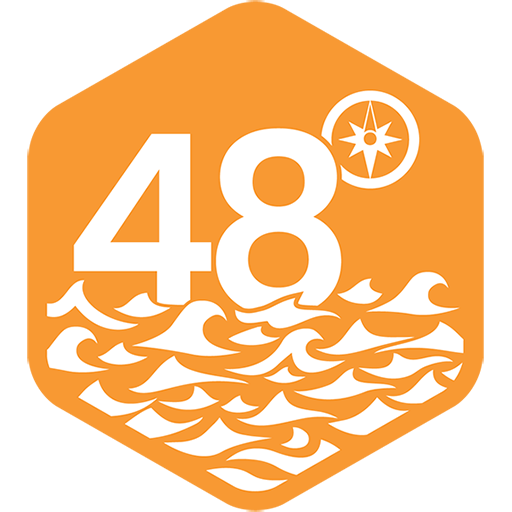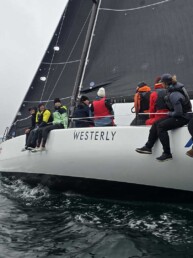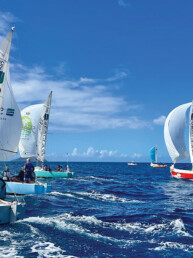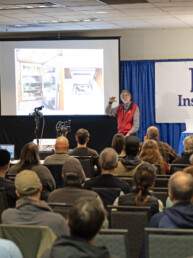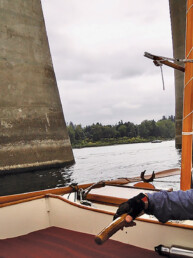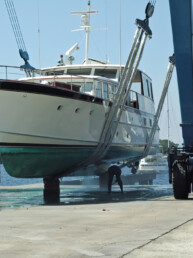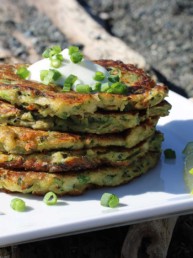Sitting among dozens of J/70 racers who had sailed the 26 boats that made up that evening’s fleet, I drank in the fading summer twilight on the lakeside patio. The post-race din held everything from casual conversation to active education, and my attention was soon drawn back to the middle ground of a good-natured deliberation between some longtime sailing pals. I was equally envious of their enthusiasm as I was relieved not to be party to their voyage through contention to consensus. The content of their discussion wasn’t critically important to me that night, but I am intimately familiar with this kind of inquisitive discourse and its unique brand of import—honing the slightest details of set-up, trim, and boat handling; chasing that thousandth-of-a-knot; aching for reliable answers in an environment as inherently complex and dynamic as sailing. Such challenge and commitment, partnership and vulnerability, community and doubt and positive reinforcement—it all makes up the crucible of one-design racing. It’s fun, too, I swear.
Hardly an original idea, but I’ve always thought one-design racing is the best and most fun version of the game, and for me the sportboat sailed by a crew of three to five people is at the mountaintop. The J/70 nestles neatly into that category.
Though one-design has always had my heart, I’ve spent more time in the last decade racing under various handicap scoring systems, learning and experiencing more alongside incredible sailors than I would have thought possible—I count myself extremely lucky. But in part because of what I didn’t find in these recent years, it’s even easier for me to appreciate how valuable it is to sail the exact same boat as your fellow racers. It’s an open invitation to ask, to learn, and to lean into the collaborative camaraderie of competition. It’s possible to find a similar community when racing under a handicap, but in reality it’s just harder. If you’re sailing different boats, the sharing of knowledge often bypasses the directly actionable on its way to the theoretical. That’s part of what makes one-design racing such an accessible learning environment—mastering the processes that make the boat fast paves the way to understanding the principles that animate those mechanics. In essence, you get more enjoyment in the near term while still giving oxygen to the slow burn of deeper knowledge and nuance.
The J/70s have it all right now, boasting big numbers and the panache of some of the region’s most successful sailors. Crucially, though, there are a lot of folks heading out to the same start line on Wednesday nights who are not as accomplished or experienced. Unique to the local J/70s is the role of fleet coach, Ron Rosenberg, whose leadership is not only helping the fleet get up to speed more quickly, but is also fostering a culture of investment in your competitors—like members of the same team. What Ron preaches is special and helps catalyze good practices, but I personally know similar wholesome community vibes are part of many one-design fleets.
None of that positivity precludes the effort, rigor, and desire within a given one-design team, which brings us back to the table with my pals and their debate about boat handling and trim. I know this may not be everybody’s definition of a
perfect evening—sailboat racing’s appeal has its limitations, and other approaches are growing (see the Adventure Racing section, page 38 of the August issue)—but to me it’s truly special.
Stepping back into the one-design environment illuminated all the meaning and connection, the knowledge and reward, the learning and sharing that is available to anyone who joins a fleet like the PNW J/70s. It made me nostalgic for my own history with such communities, and makes me plot my course back toward the fellowship with those debate-partner friends alongside whom I happily give my free time to solving sailing puzzles, getting faster, and having a legit blast along the way.
Joe Cline
Joe Cline has been the Managing Editor of 48° North since 2014. From his career to his volunteer leadership in the marine industry, from racing sailboats large and small to his discovery of Pacific Northwest cruising —Joe is as sail-smitten as they come. Joe and his wife, Kaylin, have welcomed a couple of beautiful kiddos in the last few years, and he is enjoying fatherhood while still finding time to make a little music and even occasionally go sailing.
